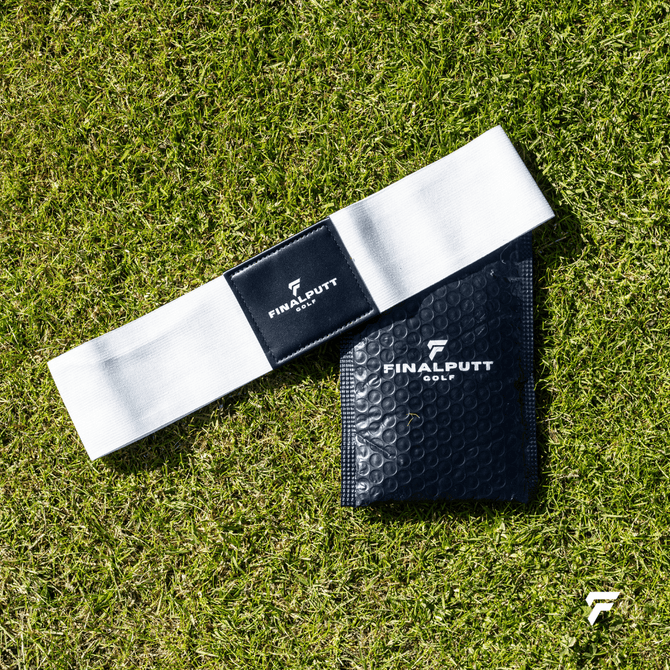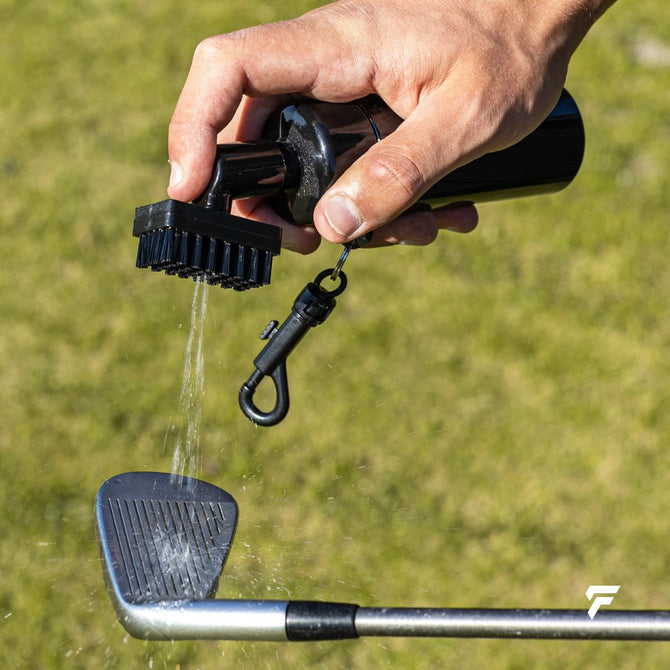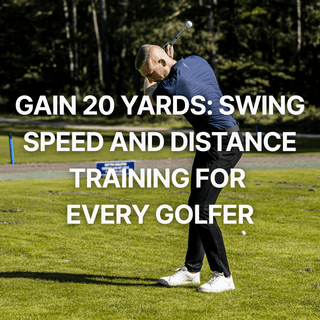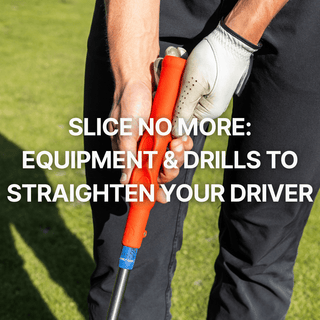
Golf Tips for Seniors: Improving Distance and Flexibility
As we age, flexibility and distance tend to decline, but with focused techniques and tailored exercises, senior golfers can maintain power and agility on the course. Here are some practical tips and exercises designed specifically to help senior golfers maintain distance and flexibility, leading to an enjoyable and effective game.

1. Focus on Flexibility First
Flexibility is foundational to a powerful, controlled swing. As we age, it’s natural for muscles and joints to lose some elasticity, which can limit the backswing and follow-through. Regular flexibility exercises help maintain range of motion and prevent injuries. The Flexclub is the perfect training aid for this.
- Stretching Routine: Begin with dynamic stretches, like arm circles and torso twists, to warm up before play. Post-round, incorporate static stretches focusing on the shoulders, hips, and hamstrings to maintain flexibility.
- Recommended Exercises: Consider seated or standing torso twists, hip openers, and shoulder stretches. Practicing these regularly increases range of motion and promotes a full, natural swing.
2. Build Core Stability for Power
A strong core is crucial for balance and stability throughout the swing, and it protects the lower back from strain. Core exercises help seniors build the stability needed to maintain balance and increase power.
- Core Strength Exercises: Simple core exercises like seated or standing torso rotations, side bends, and even light planks improve both core strength and endurance. Performing these exercises daily supports a balanced, steady swing that maximizes distance.
- Rotation Tools: Practicing rotation with aids like resistance bands or tools like the Turner Pro can enhance core stability, building a more connected and powerful swing. These aids help activate core muscles in a golf-specific way.

3. Emphasize Proper Technique Over Speed
Seniors may not have the same clubhead speed as younger players, but maximizing swing mechanics can compensate for slower speeds. Focusing on smooth, controlled mechanics improves both distance and consistency.
- Controlled Backswing: Maintain a steady, deliberate backswing to store power for the downswing. Using aids like the Connection Band encourages arm-body unity, preventing overextension and helping build a controlled, compact swing.
- Follow Through Fully: Avoid stopping the swing short; let your body naturally rotate through the follow-through for optimal power transfer. A full follow-through helps maximize distance and reduces the chance of injury.

4. Strengthen Lower Body for Stability and Power
Strong legs are essential for a stable base and powerful drive. Leg strength and endurance improve balance and help generate power from the ground up, essential for a steady, powerful swing.
- Lower Body Exercises: Simple exercises like seated or standing calf raises, body-weight squats, and lunges improve leg strength and endurance. These exercises can help golfers maintain stability during the swing, adding distance and consistency.
- Weight Transfer Practice: Practice shifting weight from the back to the front foot during the swing. This shift allows the body to use ground force for a more powerful, controlled shot.
5. Use Lightweight Clubs and Flexible Shafts
Equipment choice can make a significant difference in maintaining distance. Lightweight clubs and shafts designed for slower swing speeds help senior golfers achieve higher clubhead speed without extra effort.
- Club Selection: Consider clubs with lightweight graphite shafts, which are easier to swing and reduce stress on joints. Clubs designed for slower swing speeds also help optimize distance, so selecting the right shaft flexibility is important.
- Custom Fitting: A professional fitting can ensure that clubs match your swing speed and strength. This maximizes efficiency and reduces strain, helping seniors play comfortably while maintaining distance.
6. Practice Short Game for Lower Scores
Distance is essential, but focusing on the short game can help lower scores even if driving distance declines. A solid short game compensates for any lost yards off the tee and provides a more well-rounded skill set.
- Putting Practice: Practice putting regularly to improve accuracy and control. Tools like the Putting Ruler and Pro Tutor can help build consistency and confidence on the greens.
- Chipping Drills: Work on chipping accuracy to improve proximity to the hole. Short-game drills that focus on precision around the greens are especially valuable for senior golfers, as they reduce the number of strokes needed to get to the hole.

7. Incorporate Recovery and Rest
Aging bodies take longer to recover, so prioritizing recovery time is essential. Ensuring rest between rounds and following a post-round stretching routine can prevent injuries and keep muscles flexible.
- Recovery Practices: After a round, engage in gentle stretching to release tension and prevent soreness. Foam rolling can also relieve muscle tightness, while adequate hydration and nutrition support muscle recovery.
- Rest Between Rounds: Allow at least a day of rest between rounds to avoid overuse injuries. On rest days, focus on light stretching and gentle movement to keep joints flexible without straining the muscles.
Final Thoughts
Improving distance and flexibility as a senior golfer involves a combination of targeted exercises, proper technique, and the right equipment. By focusing on flexibility, core strength, proper mechanics, and the short game, senior golfers can enjoy a powerful, controlled game well into their later years.
Ready to Maximize Your Game?
Visit FinalPutt.com to explore training aids like the Turner Pro and Flexclub for rotational strength and the Putting Ruler to sharpen your short game, helping you enjoy golf with confidence and consistency!






